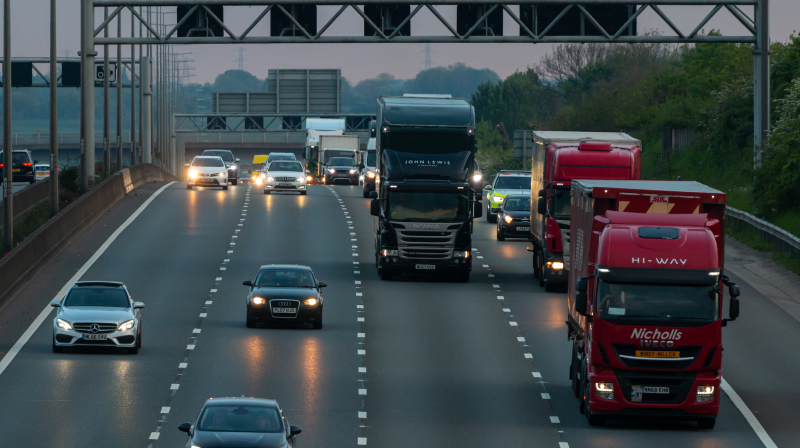Urban areas bring unparalleled complexity to last-mile delivery, testing the efficiency of even the most robust logistics networks. The rising need for quick and dependable deliveries has put a lot of pressure on logistics companies. This is especially true for those that manage e-commerce, food, and grocery delivery services. From traffic congestion to rising expectations for same-day deliveries, businesses must address these challenges to remain competitive.
Key Challenges for Last Mile Delivery in Urban Areas
Understanding the main challenges of last-mile delivery is the first step to creating a better delivery process. Here are the primary obstacles businesses encounter when operating in urban areas.
1. Navigating Traffic Congestion
Traffic congestion is a persistent issue for last-mile delivery vehicles in urban areas. Clogged roads and limited access routes frequently delay deliveries, increasing fuel consumption and raising last-mile delivery costs. Without access to real-time traffic information, delivery operations struggle to maintain efficiency, impacting customer satisfaction and overall profitability.
2. Complex Delivery Route Planning
Urban deliveries require careful delivery route planning to handle multiple stops within tight schedules. Many logistics companies face difficulties in managing delivery density while ensuring operational efficiency. A lack of route optimization software can lead to inefficiencies, delays, and missed delivery windows, causing dissatisfaction among customers.
3. Customer Expectations for Speed and Transparency
Modern customers demand quick, accurate, and trackable deliveries. The growing need for urgent delivery services, particularly for e-commerce and same-day deliveries, adds pressure on businesses. Addressing these high expectations without escalating costs remains one of the most significant last-mile delivery challenges.
4. High Delivery Costs in Urban Areas
Operating in densely populated areas often leads to high last-mile delivery costs. Inefficient vehicle utilization and suboptimal delivery route planning further escalate these expenses. Reducing these costs without compromising service quality is a key challenge for businesses.
5. Environmental Concerns
The rapid growth of urban logistics has brought environmental issues to the forefront. Many logistics businesses face the dual challenge of meeting customer demands for faster deliveries while reducing their carbon footprint. The adoption of eco-friendly practices, such as integrating electric last-mile delivery vehicles, has become essential for sustainable operations.
6. Reverse Logistics Challenges
Managing returns, or reverse logistics, adds another layer of complexity to urban delivery logistics. Poorly managed returns disrupt operations, increase costs, and diminish customer satisfaction. Effective reverse logistics solutions are vital for ensuring smooth and cost-effective processes.
Strategies to Overcome Last-Mile Delivery Challenges
As urban areas become more congested and customer expectations rise, logistics companies need innovative strategies to stay ahead. By tackling important issues in last-mile delivery, businesses can improve their operations. This helps lower costs and boost customer satisfaction. Below are some effective strategies to overcome the common hurdles faced in urban last-mile delivery.
a. Leverage Route Optimization Tools
Adopting route optimization software enables businesses to navigate urban complexities effectively. These tools look at real-time traffic data and delivery density. They help businesses reduce delays, speed up delivery times, and cut last-mile delivery costs.
b. Optimize Vehicle Utilization
Deploying a diverse fleet of last-mile delivery vehicles, including smaller vehicles or bikes, ensures businesses handle congested urban areas with greater flexibility. This approach optimizes vehicle allocation, improves efficiency, and reduces operational bottlenecks.
c. Enable Real-Time Tracking
Using real-time tracking systems ensures visibility into delivery logistics progress. Customers can keep track of their orders. Logistics companies can quickly fix problems. This improves transparency and trust in same-day deliveries and other urgent services.
d. Focus on Sustainability
Implementing eco-friendly solutions, such as electric last-mile delivery vehicles or consolidated routes, significantly reduces emissions. These sustainable practices follow environmental rules. They also meet the rising need for greener delivery software solutions.
e. Improve Reverse Logistics
Efficiently managing reverse logistics through automation minimizes costs and enhances customer satisfaction. Streamlining returns within the last-mile delivery business ensures smoother operations and strengthens customer trust.
Overcoming Urban Last-Mile Delivery Challenges: A Success Story
One logistics provider struggling with inefficiencies in urban last-mile delivery turned to nuVizz for a solution. This company manages deliveries for many locations. It faces big challenges like traffic jams, complex route planning, and the need for real-time visibility in cities.
Challenges
Traffic congestion:
often delays deliveries while navigating through highly congested urban streets, impacting customer satisfaction and increasing operational costs.
Route Optimization:
With numerous stops to make within tight time windows, the provider struggled to efficiently plan delivery routes.
Real-Time Tracking:
The provider could not see deliveries in real-time. This made it hard to monitor and adjust for delays, causing inefficiencies.
Solution
By integrating nuVizz’s route optimization and real-time tracking capabilities, the logistics company improved several aspects of their delivery operations:
Route Optimization:
The software analyzed real-time traffic data and optimized delivery routes, helping drivers avoid congested areas and minimize fuel consumption.
Real-Time Visibility:
With better tracking, the company can see each delivery clearly. This helps them give customers accurate delivery times and manage delays before they happen.
Operational Efficiency:
By using automated scheduling and resource allocation, the company improved its delivery planning. This made each route more efficient and cost-effective.
Results
Improved Efficiency:
The logistics company reported a 30-35% reduction in operating costs through better route planning and resource management.
Better Customer Satisfaction:
Real-time tracking and better route accuracy helped ensure on-time deliveries. This increased customer trust and loyalty.
Scalability:
The platform can easily grow to support more delivery partners. This helps the company meet the rising demand for urgent and same-day deliveries.
Urban last-mile delivery is a tough challenge for logistics companies. However, with the right tools and strategies, businesses can overcome these problems.
By using route optimization software and real-time tracking, companies can work more efficiently. They can also reduce costs and meet customer needs for speed and reliability. Sustainability and managing reverse logistics further enhance the long-term viability of urban delivery operations.
Implementing such technologies, as demonstrated by our case study, can significantly boost efficiency, reduce delivery costs, and ensure customer satisfaction. Logistics companies want to stay competitive. They can do this by using new delivery software solutions from nuVizz. These tools help meet the rising demands for same-day deliveries and e-commerce logistics.
In the changing city environment, businesses must adapt and improve. They should use technology to overcome delivery challenges and provide better customer experiences.

